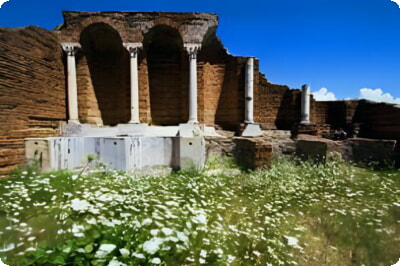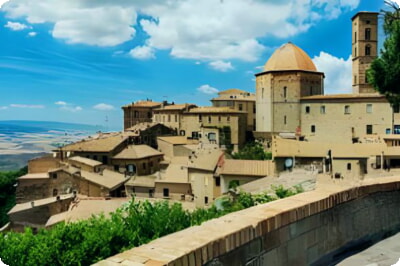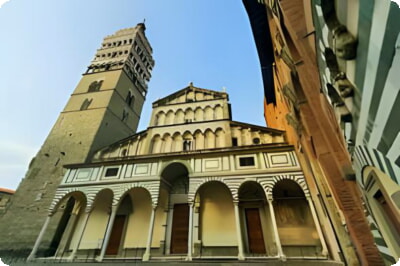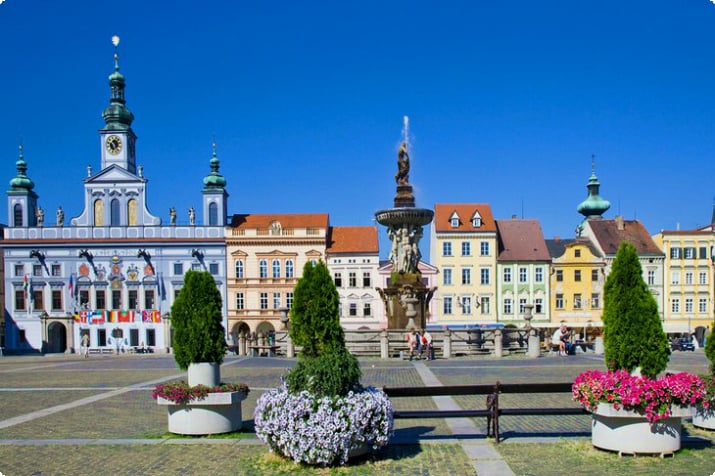Explore Ancient Ostia: A Guide to Rome's Historical Port City
As Italy's second-largest archaeological site, Ostia Antica offers a glimpse into ancient Roman life. Easily accessible from Rome, visitors can opt for a convenient guided tour to explore this historical treasure.
Established in the fourth century BC near the Tiber's mouth, Ostia served as Rome's naval base and commercial port, eventually growing to house 50,000 people. After the Roman Empire's decline, the city was abandoned, leaving behind ruins that date from the second to fourth centuries AD, providing insight into Imperial Rome's urban life.
Discover the highlights of Ostia with our curated list of must-see attractions.
1. Baths of Neptune
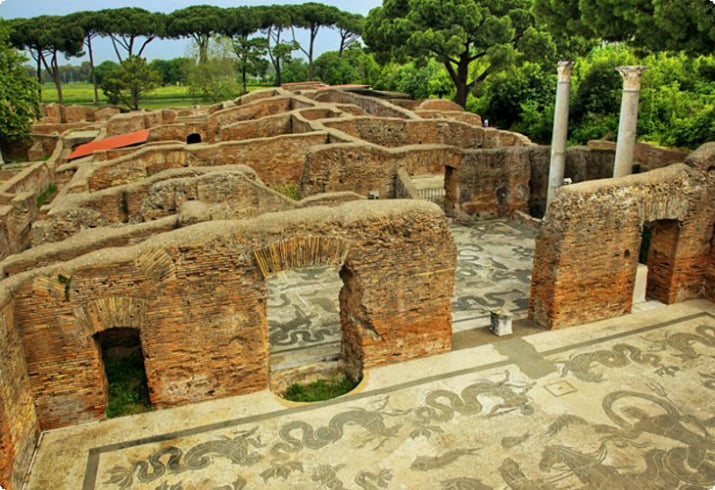
These public baths, adorned with sea-themed mosaics, were a social and hygienic hub in Roman towns. Visitors can view the heating system and nearby Watchmen's Barracks.
2. Theater
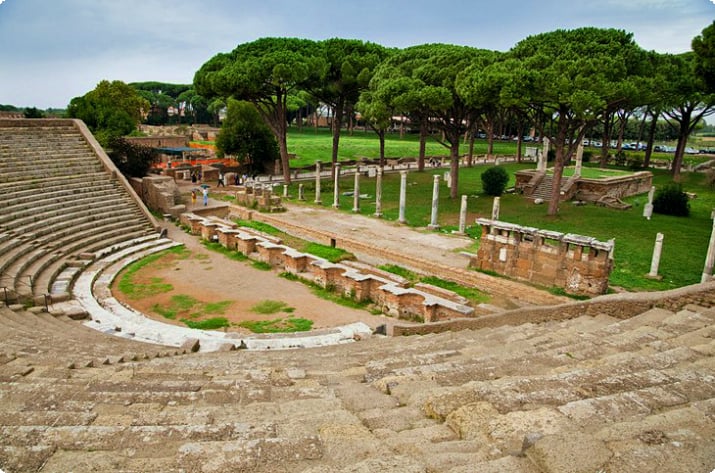
Near the Baths of Neptune, the theater seated 2,700 and offers views of the Piazzale delle Corporazioni and the House of Marcus Apuleius Marcellus.
3. Capitolium and Forum
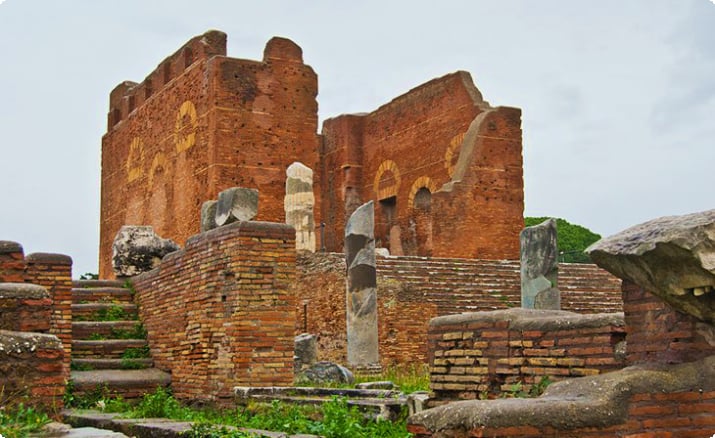
The Capitolium, Ostia's religious heart, stands tall with the Forum at the city's center, showcasing the Temple of Roma and Augustus and nearby second-century baths.
4. Decumanus Maximus
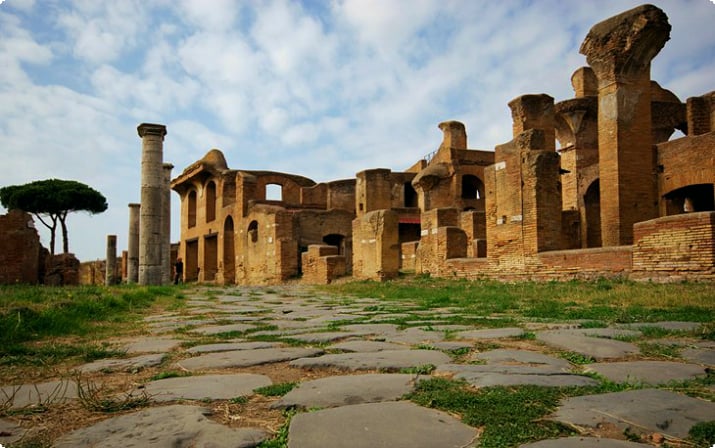
This main street features major public buildings, shops, a fishmonger's shop, and a well-preserved Thermopolium.
5. Bakery
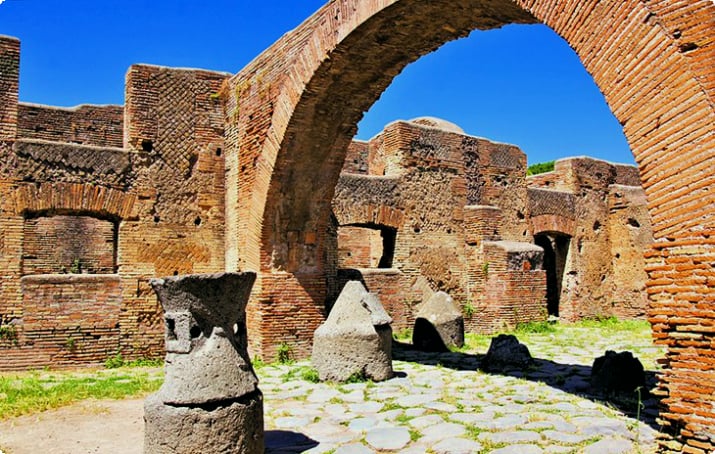
The bakery's barrel vaulting dates to the Severan period, located opposite the Grandi Horrea, where grain was stored and processed.
6. Horrea Epagathiana & Domus di Amore e Psiche
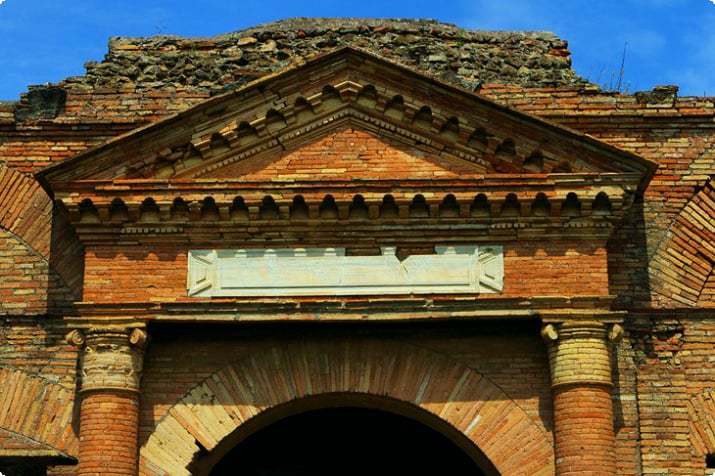
These private warehouses and the adjacent Domus di Amore e Psiche showcase typical residential and commercial structures.
7. Tombs
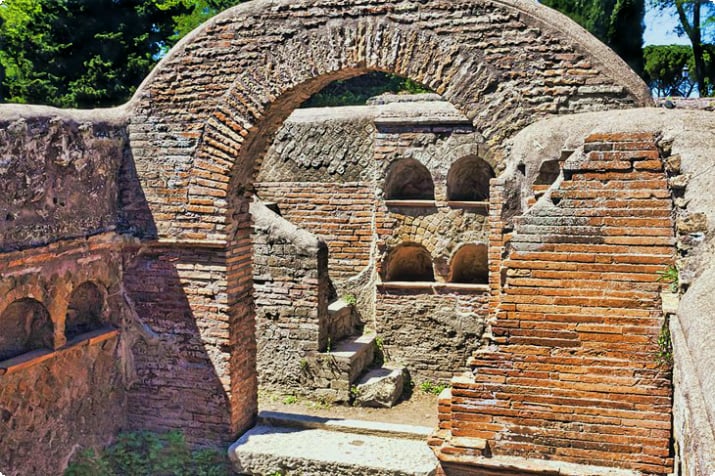
Near the excavation entrance, rows of tombs line the ancient Via Ostiensis, leading to the significant Porta Romana.
8. Porticus della Fontana a Lucerna
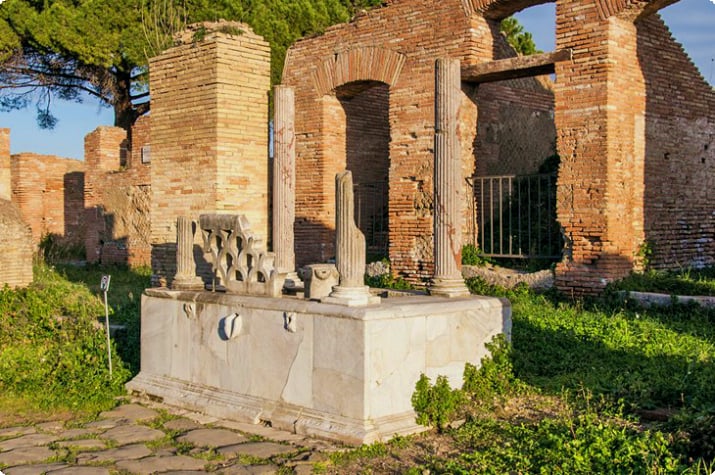
This apartment block with shops and a decorative portico suggests affluent residents once lived here.
9. Archeological Museum of Ostia
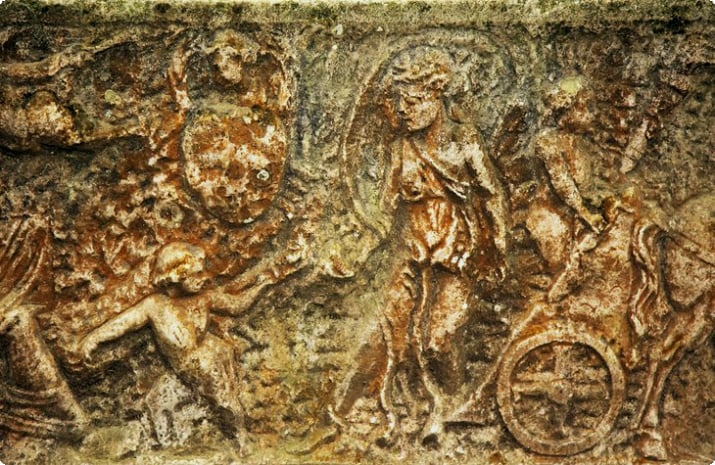
The museum, set in a 15th-century building, displays artifacts from Ostia, including a large marble statue of Minerva and a rare portrait of Trajan.
Official site: http://www.ostiaantica.beniculturali.it
10. Explore Borgo di Ostia Antica
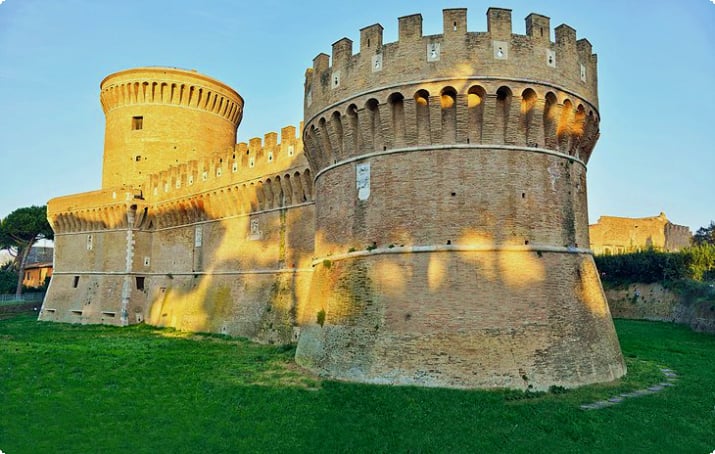
The newer town features the Castello di Giulio II and the Renaissance church of Santa Aurea.
11. Go to the Beach
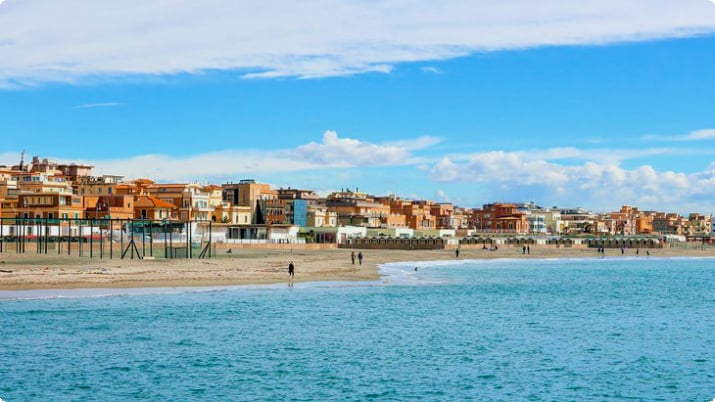
Ostia's beach offers a slice of Italian beach culture with its colorful umbrellas and stabilimenti.
Where to Stay in Ostia
While few hotels are in Ostia Antica, there are several options in Ostia Lido and Fumicino. Recommended hotels range from luxury to budget-friendly, with amenities like pools, sea views, and proximity to archaeological sites and transportation.
Tips and Tours: How to Make the Most of Your Visit to Ostia
Guided tours can enhance your experience, providing transport and expert insights. Alternatively, independent travelers can use Rome's transport passes to reach Ostia and rent audio tours in English.
More Related Articles on tripates.com
After exploring Ostia, consider visiting Rome's top attractions, the Vatican's treasures, and the ancient cities of Pompeii and Herculaneum. Guides on where to stay in Rome and Naples are also available.

